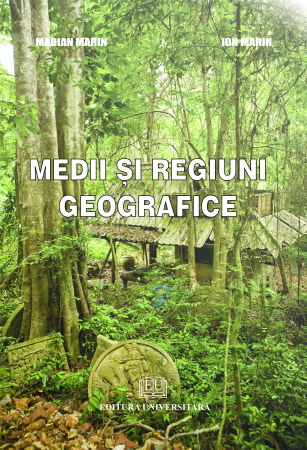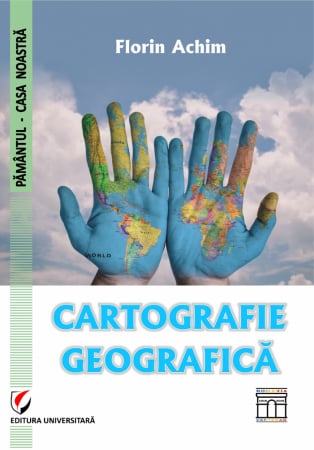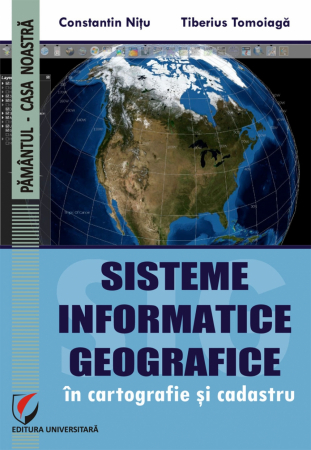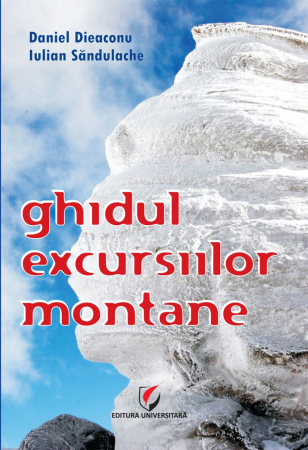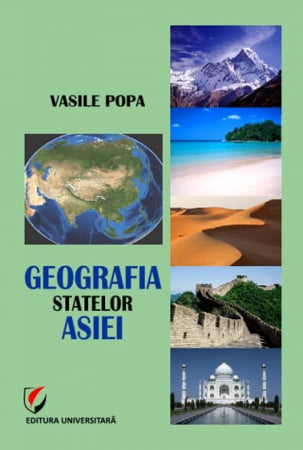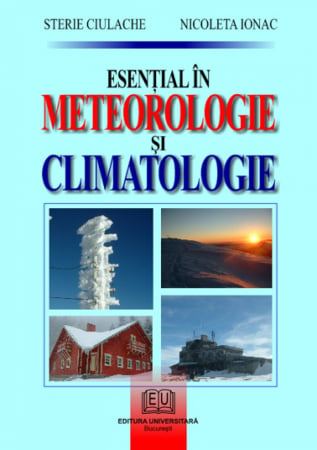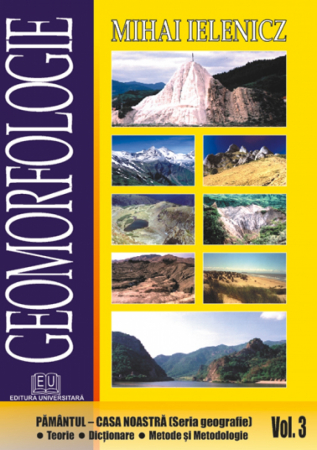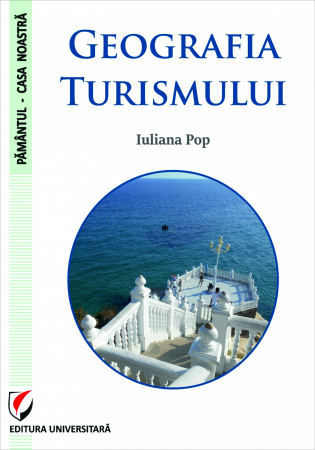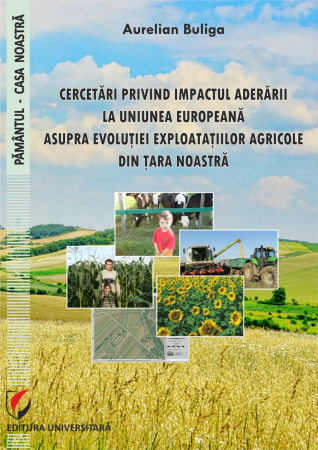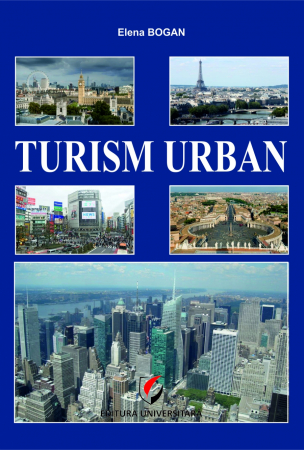ISBN: 978-606-591-359-2
DOI: 10.5682/9786065913592
Publisher year: 2012
Edition: I
Pages: 198
Publisher: Editura Universitara
Author: Viorel Mionel
- Description
- Download (1)
- Authors
- Reviews (0)
It is quite easy to enumerate the things that seem to belong to the city. Squares, parks and pizzerias bubble people. Street cafes and ethnic restaurants. Elegant department stores. Subways and passages. Buses, trams and trolleybuses.Bustling sidewalks. Cries of street traders. Traffic noise. Bold skyscrapers. Malls and industrial parks. Buildings and huge sports stadiums. People dressed nonconformist or outrageous. Street shops. Slum sites, ghettos, neighborhoods elitist and rented houses. Beggars and drug addicts. Buildings covered in dust and soot. Smog. Impure water from the tap. We must not forget the exhibition halls, conference centers, art galleries and cultural spaces. Corner gangs / gangs, logistic warehouses and new media centers. No monuments and museums, or shopping alleys and airports should not be omitted. The list is endless. It is also quite easy to enumerate those adjectives that can give a sense for what are cities in general. Fast, loud, loud, bold. Diverse, cosmopolitan surface. Unnatural, inhuman, anonymous. Risky, elegant, dazzling and dangerous. All of these words send something depending on how cities are experienced and perceived, depending on how they are understood. However, it is difficult to define what a city is really the city, and are forces that make life truly be urban.
This paper obviously has not proposed to define the city or answer questions about urban life in general but, rather, wants to bring to the attention of the specialists and lay persons, urban segregation problem. Therefore, if we were to relate to urban life, the subject of this review covers only a small part of urban life, which is just a cog mechanism urban complex. I can not see the city even dedicating a thousand adjectives and lists the things that seem to belong. The factors and their determination does not help. What really gives value to a city is how it works and how the functionality of thanks urbanii (city residents). Mental and physical needs creates a prerequisite for people not to seek a better place, otherwise leave the location for individuals to live better and more civilized in another city. Here are reasons why we often hear that cities in the Nordic countries are the most favorable settlements. And also why people in our jurlul residents of Bucharest, talk often fierce desire to leave the city. Segregation is present in almost all cities of the world. But some of its action is almost imperceptible, since it has so many facets of expression. Therefore, undoubtedly, one of the factors in the dislikes to a city is urban segregation, an essential element of urban geography.
So we have a problem. While many of the themes that geographers delighted planners have been addressed in the literature, urban segregation was considered to be subscribed to other urban problems (poverty, mobility, housing, infrastructure of utilities, etc..), Or simply left out , became the stage of analysis of other specialists (sociologists in particular, but also economists, historians, architects, etc..). Thus, a concept defining spatial dynamics of urban geographical analysis escaped, losing much of the quality of studies. As such, urban decision-making fora barely remembers geographical studies and research, as they are often considered impractical; precedence getting other areas mentioned, which has also affected the morphology and structure of current urban social space. And it probably is easier to understand why Bucharest is not satisfactory for its inhabitants. In other words, it should be noted that urban segregation is literally the only thing she lacked urban geography, but is one of the most important. Socio-spatial structures and their choices generate the spatial dynamics of a settlement (both urban and rural). And geographical understanding of these spatial forms, can fill gaps left by other sciences, or in other words, geographical studies of urban segregation can enrich the multi-disciplinarity of urban approaches in functional purpose.
The importance of urban segregation book. Separate but together is given primarily by the novelty of the subject to national literature and theoretical and methodological analysis of segregation process seen in an integrated manner at the city. Aggregation logical concepts and urban social segregation intercede with filtering it through a number of scientific, followed by social and spatial typology of forms found in the literature and outline the most important causes and effects of urban, have been a first element in the analysis paper. And secondly, its value lies in concrete and practical analysis of capital case, where the theoretical have been rigorously applied through socio-geographic methods (qualitative and quantitative).
A first step in developing the subject choice motivation was the theme, which was causally related to subsequent changes occurred after the revolution in the structure and functionality of Bucharest, and the fact that today most cities are defined, not uniformity, but rather by heterogeneity (ethnic, economic, functional, etc..). Continuous transformation of urban space under direct quality of life is a social and geographical reality. The evolution of urban areas is caused by several phenomena: social segregation apathy, gentrification, urban renewal, residential mobility, and others. Areas are becoming too costly economically, generating eliminate those can not afford to live in such an area, either newly created spaces are hard to reach certain social groups. This whole complex of factors generate significant areas where some classes have access or that certain individuals are excluded. Visible especially after 1989, this dynamic affected Bucharest in a fairly intense. To speak Ferentari today without mentioning the Roma, poverty and delinquency, or about Cotroceni and Spring without having in mind rich people living there, is like trying to introduce capital without its great cultural buildings (Atheneum, the National Museum of History, National Library, National Military, etc.) made under the protection of Charles I, admitting that it had no role in the city's cultural evolution.
Moreover, under capitalism and democracy, everyone is free to choose where he wishes to locate. One reason for the interest aroused by the subject, was the manner in which different social groups in space focuses not only on the income and ethnicity, race, education or religion. On the other hand, scientific curiosity was encouraged to answering the question whether and in Bucharest these forms of spatial concentration are present and what effects they generate? The purpose and objectives of the paper had two dimensions. The first dimension was to create a framework for future theoretical and methodological approaches to urban segregation and the second analysis focused on the methodology developed in Bucharest where this paper. The scientific approach required, as was normal, theoretical and methodological borrowing from other sciences. Basically the most important and novel scientific evidence of this paper is to analyze the case of Bucharest urban segregation. However, analysis of the segregation of urban Bucharest practical applications, and other innovations make for studies in the field and are discussed extensively in the pages of the book. As such, the present study, as we have already mentioned, gains and ambitions practical application showing real ways. Following the trends, changes and spatial mobility of capital Croitoru social, political and administrative mechanisms in conjunction with the authorities, this paper can provide tangible solutions for future urban dynamics, in which segregation is becoming more and more diminished. Among the undesirable effects that take the form of spatial segregation are ghettos and slum sites. Lack of money and opportunities impels the inhabitants of the ghettos and slum sites for illegal activity, drug use and violence. However, lack of education perpetuates social agony of these urban spaces. Based on such studies, local authorities must try to correct social problems at the lowest possible cost and without falling into the trap of "social assist". In other words, action will be based on not saying so hungry fish, but give him a fishing rod and teach him to fish.Failure to take urgent measures to eradicate poverty is accelerating dynamic spatial population living here. In other words, failure to take action now means much higher costs in the future.
That said, we believe that approach work, structured in two parts and seven chapters is logical and has as its starting point the theoretical and methodological urban segregation. In this first part of the paper were analyzed some spatial concepts of great value in understanding and discerning reason, their forms were tipologizate segregation in urban areas, then presented the causes and effects of this process, as the end of the first party to dimensions are shown how segregation and its quantification. Further, in the second part of the analysis, urban segregation in Bucharest and its surrounding areas, we stopped at some historical and toponymic guidelines reflecting the evolution of segregation of the city, after which attention was focused on the issue of spatial post-December capital with direct implications for segregation. At the end of the two sections of the work, subject matter was focused on the argument how people perceive the city and the dynamic process for future residential mobility trends desluşirii.
First chapter, theoretical considerations on the concepts of space and segregation, addresses only those items that cause or mediate the formation of spatial urban segregation. Thus were considered concepts in urban geography and the social (urban area, suburbanization, gentrification, neighborhood, ghetto, etc.), then segregation was made in accordance with their approach different sciences interested in subject (geography, sociology, economics, history, etc..).And the final chapter, I tried to define segregation (by filtering it through several fields, this time more technical, to highlight the stunning contrasts that occur in social and urban) and to bring about the variety of terminology that it is specific.For example, we studied how professionals define as metal buildings or segregation, compared with those in social sciences. It was noted that there is a difference between two such problems for society and for those dealing with her study (including geographers). As far as terminology in Chapter 1 is comprised almost the entire range of shades terminology once printed segregation in urban areas.
The second chapter takes care of segregation in urban typology, which is nothing but simple conceptual development of macro-terminology used to describe and analyze the segregated areas. To better understand what the terminology means macro-segregation, the second chapter explains various ways to share expressions of segregation. First there are two major manifestations (social segregation and geographic segregation) which in turn are subdivided into several categories. But before the exhibit categories and whose manifestations are subscribed, would be qualified social segregation that focuses on population and its social forms, while the geographical segregation influences space and urban morphology, by inducing a unique landscape with features and their identity.Do not be put equal sign between social segregation and social marginalization, whereas the latter involves only material deprivation and the first is composed of spatial expression of social forms of ethnicity, race, income inequality, education and religion. Are discussed as the first part of Chapter mechanisms racial segregation, ethnic segregation, socio-economic segregation, of the confessional or religious, and not least, of the education.
Close ties between the two manifestations of segregation, because they are interrelated, both socially and in terms of geography, spatial categories of expression born of the most diverse. Thus, the second chapter concludes by analyzing sites and architecture slum urban areas occupied by people who have high incomes and very high or, as I sometimes called the analysis of urban privileged.
Chapter three causes and effects of urban segregation begins with the cause of urban segregation: income inequality and socioeconomic status. Alongside this major cause, socio-geographical literature specialist - both national and international - brings into question many more cases which, of course, we could not miss. Poverty population accompanied by almost all its forms (relative, absolute, severe, extreme, residual, long duration, etc..) Is among the concerns discussed in this section. Moreover, discrimination - real estate, education etc. - And personal preferences are two other culprits in the development of urban segregation failure and therefore could not be omitted. As many, if not many, are the effects of urban segregation. As a result, the chapter devoted three pages are at the effects that influence the quality of housing and neighborhoods, social opportunities of all kinds, social class and voting behavior. Were simultaneously achieved effects that extreme forms, such as delinquent behavior, ghettoization, urban culture, environmental pollution and weakening health living in the segregated poor.
Turning to the last chapter of the first part, chapter four (dimensions and ways of quantifying segregation), we find that urban segregation has many dimensions and also can be quantified. The importance of this chapter is to probe the five dimensions of urban segregation: uniformity, exposure, focus, centrality and clustering, each with its own system of analysis and practical manner helping to reduce segregation.
The last three chapters are devoted to the study of cases represented by Bucharest and its surrounding areas that are in causal connection with it the functions and influence. As follows, the first section of the case study and the fifth chapter of the book deals mainly historical element and is called Historical and toponymic of segregation, of course, in Bucharest. In general, section analysis assumes that Bucharest had evolved historically troubled and strongly segregationist. Only if we think about how Armenians were welcomed to the city, the area where they settled and toponymic imprint they left it, we can get an idea of what it meant separation of communities in the hearth of the city. The analysis starts logical sequence and the presentation of the site or place where the city developed, progress to exposure for communities that have historically influenced the urban area, ie allogeneic go further in the analysis of spatial forms generated, namely slums, and ends with place names street while following the expression of ethnic communities inhabiting.
Penultimate chapter, Bucharest after 1989: empirical evidence and new forms of spatial segregation, now approaching. Here were gathered more information that helped to formulate and identify certain areas affected by different forms of segregation, transposed on a map at the end of the chapter. Besides this, the chapter six include: issues of housing types, spatial distribution of population by several indicators (education, unemployment, social assistance, etc..), And mark autosegregării gentrificării dynamic, social and urban development in peripheral areas where Financial potent groups have attempted to escape the hustle and bustle focus and some empirical evidence on urban ghettos and slum sites of Bucharest. Also as a result of empirical research were exposed premises and prospects emergence of a China Town district, taking into account that at present the third ethnic community in Bucharest, the number of members, is the Chinese.
Segregation of urban Bucharest research ends with chapter seven which were addressed perceptions and preferences of urban residential segregation of people. Given the theoretical approach methodology, the last chapter has tried finding answers to some questions in terms of perception. Thus, the results of a questionnaire and a social survey was performed and the foundation for research in the last section. The sections of this chapter are found some feedback on urban segregation in terms of those interviewed and possible evolutionary trends.
-
Segregarea urbană. Separaţi dar împreună
Download
Department of Tourism and Geography
Faculty of Commerce, Academy of Economic Studies, Bucharest
Customer Support Monday - Friday, between 8.00 - 16.00
0745 200 718 0745 200 357 comenzi@editurauniversitara.ro
6359.png)
![Urban segregation. Separate but together [1] Urban segregation. Separate but together [1]](https://gomagcdn.ro/domains/editurauniversitara.ro/files/product/large/segregarea-urban-separai-dar-mpreun-1745-211921.jpg)


